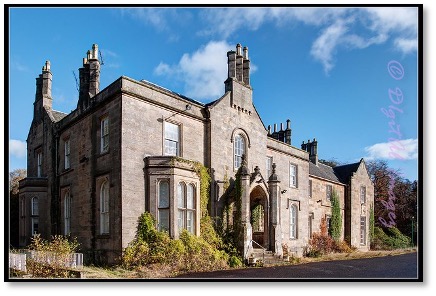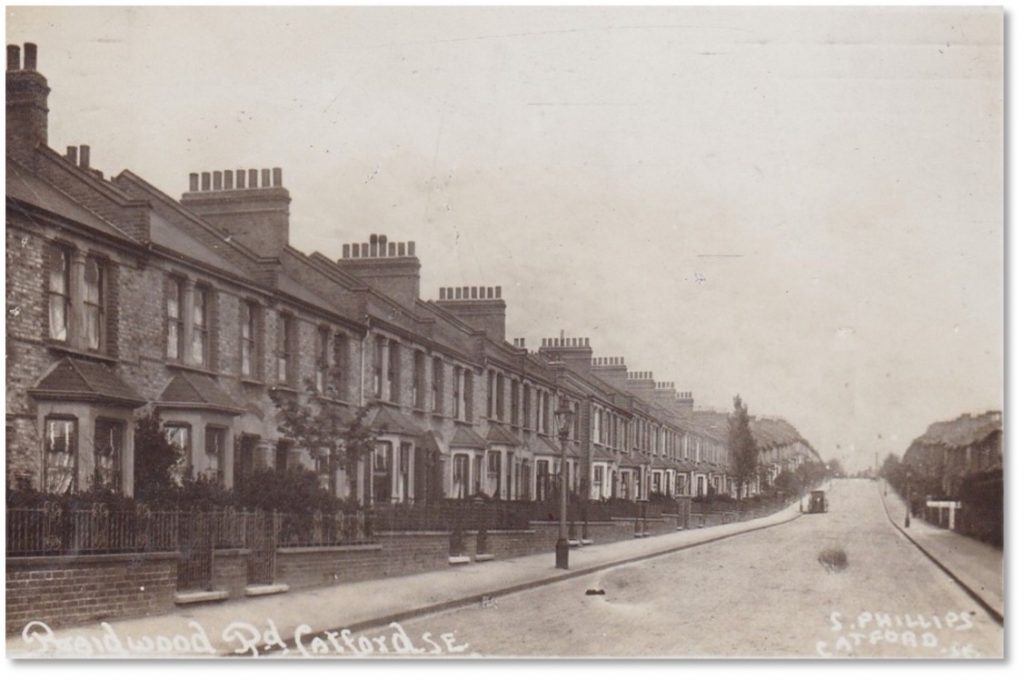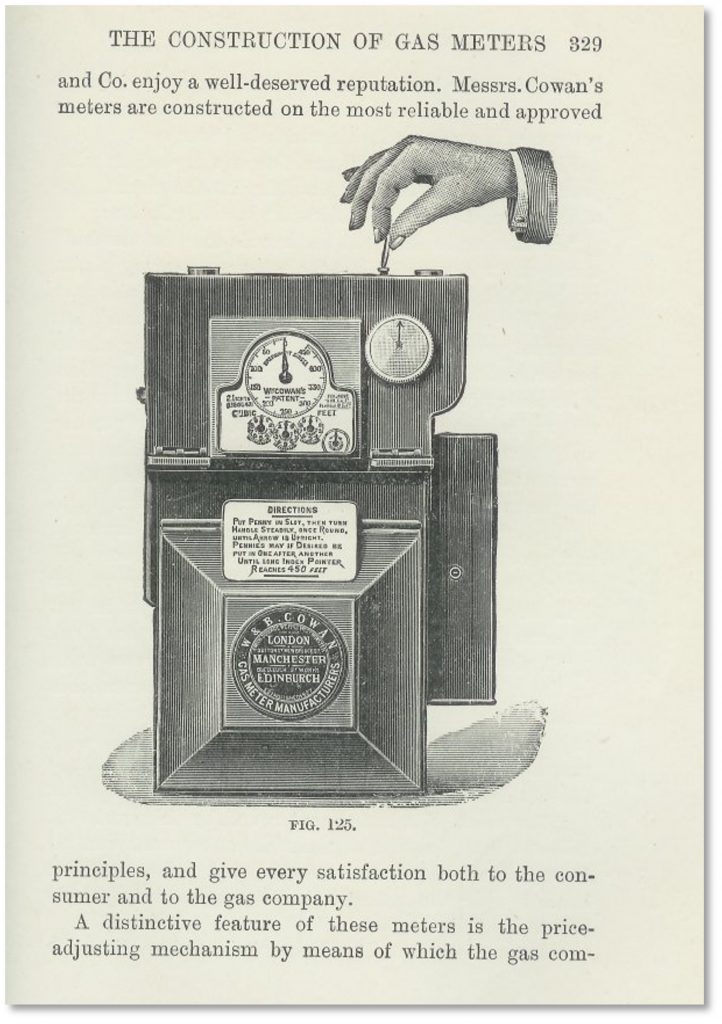“The West Indies comes to St Germans”
Background
Like many other roads on the Estate, Braidwood takes its name from a place in Scotland: in this case it’s Braidwood Village and/or it’s ‘big house’, which is situated around 24 miles south east of Glasgow on the B7056. The nearest town is Carluke.

Braidwood House, South Lanarkshire
Braidwood Road is one of the mid-sized roads in the Corbett Estate. It runs from Torridon Road in the East down to Muirkirk Road in the west, and lies between Dowanhill Road to the south and Killearn Road to the north.
Building of the street commenced around 1902, and when it was finished there were 124 houses. The 1911 census recorded 528 people residing in the road. That equates to 4.25 people per house – a mid-range average in the Estate.

Braidwood Road in the early years of the Corbett Estate
The Early Residents: details from the 1911 Census
There were more female residents than male in Braidwood, with 52.27% female and 47.73% male. The Estate average was 53% female and 47% male.
The top two adult female first names here were Mary and Elizabeth, with the male equivalents being William and John. Mary and William were by far the most popular male and female adult names in the estate. For children, it was Doris and Albert/Stanley (equally popular) in Braidwood.
As with almost every other street, the most popular kind of work for the citizens of Braidwood was as a Clerk. Of the 196 people in employment, 32 said that they did some sort of office job (Clerk). Amongst the non-office workers, there was Harry Cooper, a ‘Coach and motor trimmer’ at No. 122; Florence Colson, a 25 year-old ‘Fancy Box’ worker at No. 9; and Arthur Briant at No. 109, who had the rather grisly job title of ‘Warehouse Foreman for Hide and Skin’.
74 year-old William Banfield, residing at No. 129, gave his occupation as Blacksmith: in the days before the welfare state, retirement might not have been an option so it’s quite possible he was still working. Of course it would be hard to find a Blacksmith living anywhere in the estate today, but at that time they were in abundance given that horses were still in everyday life and needed shoes, and wrought iron work was needed in the building industry for railings and gates for house frontages for example.
The street record for the highest number of children in a single family is 8 at No. 66. They were the Jones family, who numbered 10 in total. Mrs Emma Jones was only 34, and husband Thomas 40. Emma’s eldest son, Steven, was 17 and already a Gas Fitters Mate. 14-year-old daughter Minnie worked as a Milliner and then there were two other boys and two more giles, plus twins Stanley and Albert aged 4. A busy household, particularly when there were only 3 bedrooms!
At No. 99 lived Sarah Walker who takes the road’s prize for ‘resident from furthest away’: She was from the West Indies. Overall, the vast majority of the street’s residents (77%) had been born in London (higher than the Estate average of 72%).
The oldest resident at the time of the 1911 census was Samuel Bendall who lived at No. 112. He was 80 years old.

Put a penny in the slot
While electricity was in use in a limited number of British houses by 1911, gas was still the main utility at that time. Many houses would have had coin slot meters, and this would explain why there were 8 residents in Braidwood Road who were ‘’Slot Meter Collectors’’. Three residents specifically said they were Gas Meter collectors and the other 5 more than likely were employed to do the same job. This is because the Corbett houses had gas lighting: you can still see the fittings in many houses today. Electricity was beginning to take the place of gas lighting, but by 1910 only 2% of UK homes had electricity. Some residents of St Germans did have occupations connected to electricity (see the Street Profile on Birkhall Road), but they would have been working away from the Estate.
The ‘penny in the slot’ meter
Although the rotary gas meter was invented in 1817, at first gas supplied to consumers was not measured. Instead, the amount consumers paid depended on the number of lights they had. Domestic gas meters became more common in the second half of the 19th century and the introduction of the prepayment or slot meter after 1870 was important in putting gas within reach of poorer people.
In addition to the gas meter collectors, there were also another 10 residents who had a job with gas such as Fitters, Automatic Meter Repairers, a Gas Stone Fitter and generally working for the Gas Company.
There were in all, 18 residents in Braidwood Road who were working in the gas industry.